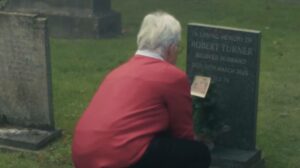“Secrets Beneath the Sands: Stunning Discovery Unveils Ancient Egypt’s Hidden Treasures Near Tutankhamun’s Tomb!”
Hold onto your papyrus, folks! Just when you thought all the ancient secrets of Egypt had been unearthed, a colossal discovery has sent archaeologists buzzing with excitement! In a newly unveiled treasure trove, hidden beneath the sands of Luxor, unknown tombs and burial shafts dating back a staggering 3,600 years have been found. This isn’t just any historical find—it’s a game-changer that’s making experts reconsider what we thought we knew about Ancient Egyptian history. If you’ve ever wondered what kind of surprises the desert still has up its sleeve, you’re not alone! So, what’s hiding down there? The Zahi Hawass Foundation for Antiquities and Heritage, established by the legendary Egyptian archaeologist Zahi Hawass, has been on the case since September 2022, and the latest revelations have sent shivers down the spines of history buffs. Ready to dive deeper? LEARN MORE.
A huge discovery has been made in the area of Ancient Egypt where Tutankhamun was found after unknown tombs and burial shafts were found dating back some 3,600 years.
And it is a find that has made archaeologists investigating this period of time re-think how they see history as we know it.
The revelation came following a new dig early this month by the Zahi Hawass Foundation for Antiquities and Heritage, a foundation established by Egyptian archaeologist Zahi Hawass to teach Egyptians hieroglyphics, archaeology, and the history of Egypt.
In the significant find, experts came across a vast tomb and burial area carved in to rock, hidden below the surface of the ancient city of Luxor.
The discovery was made last Wednesday in an area of Queen Hatshepsut’s funeral temple at Deir al-Bahri on the Nile’s West Bank.
For context, Queen Hatshepsut reigned from 1479BC until 1458BC and is one of the empire’s earliest rules.
Work on the site had been going since September 2022 in conjunction with Egypt’s Supreme Council of Antiquities.
Artefacts found at the tombs included numerous wooden coffins, including one for a child.

The discovered tomb (Mohamed Elshahed / Anadolu via Getty Images)
There were bronze coins with the image of Alexander the Great dating to the Time of Ptolemy I (367BC to 283BC). Alongside that were children’s toys made of clay, cartonnage (a material used to make funerary masks and coffins) as well as funerary masks that covered mummies.
There were also winged scarabs, beads and funerary amulets.
More basic offerings were also present, including a pottery table used for bread, wine and meat. Archery bows were also present in the tomb.

Zahi Hawass (Mohamed Elshahed/Anadolu via Getty Images)
According to Hawass himself, he said the find could ‘reconstruct history’ as it has been told.
The hope is that it will now provide a fuller picture of the lives people had, as well as the culture they were a part of, in Ancient Egypt.
The ancient city of Luxor is famous for housing the Valley of the Kings, included the world famous King Tutankhamun’s tomb, discovered in 1922.

Egypt is full of surprises (Mohamed Elshahed/Anadolu via Getty Images)
Situated 340 miles from the Pyramids of Giza, it is known as the ‘world’s greatest open-air museum’.
The recent find is different to, say, Tutankhamun, who was buried in a constructed tomb. This week’s revelation showed burial chambers carved in to rock to create tombs in the environment that surrounded Ancient Egyptians.




















